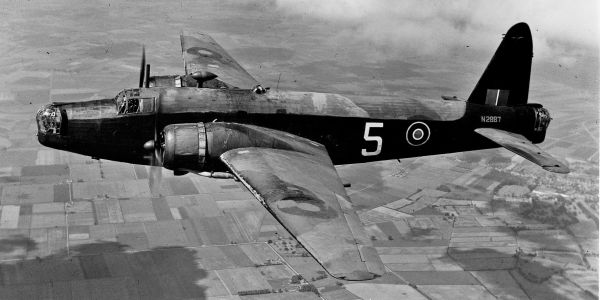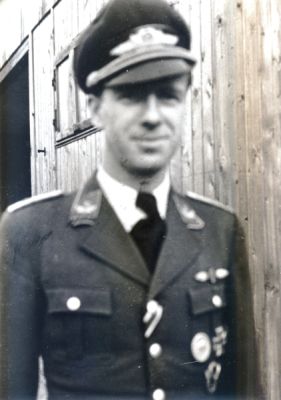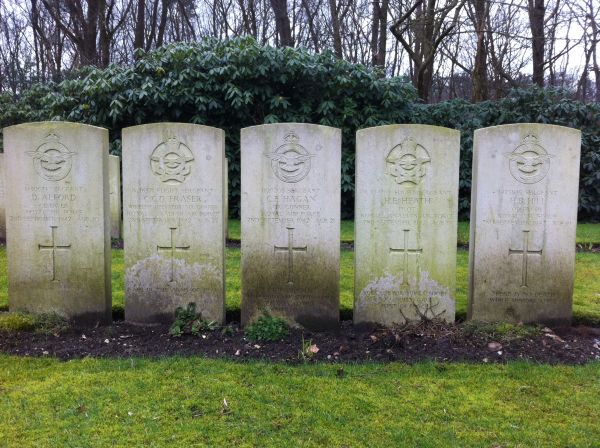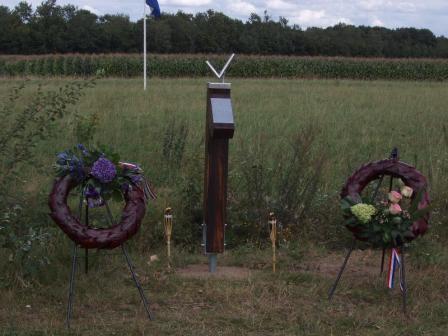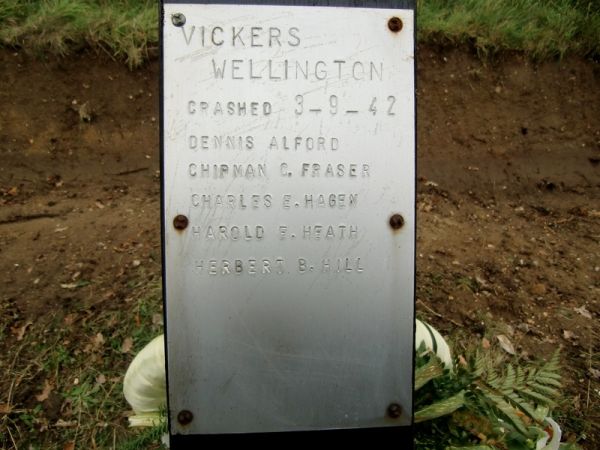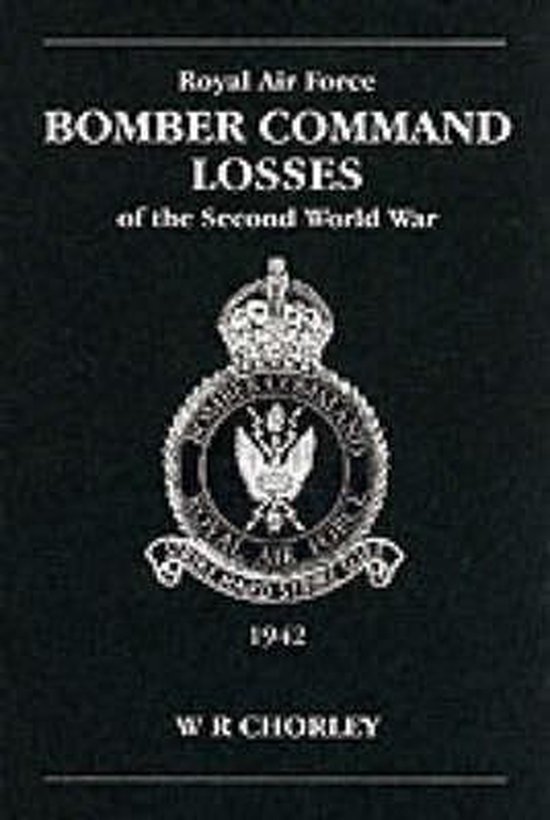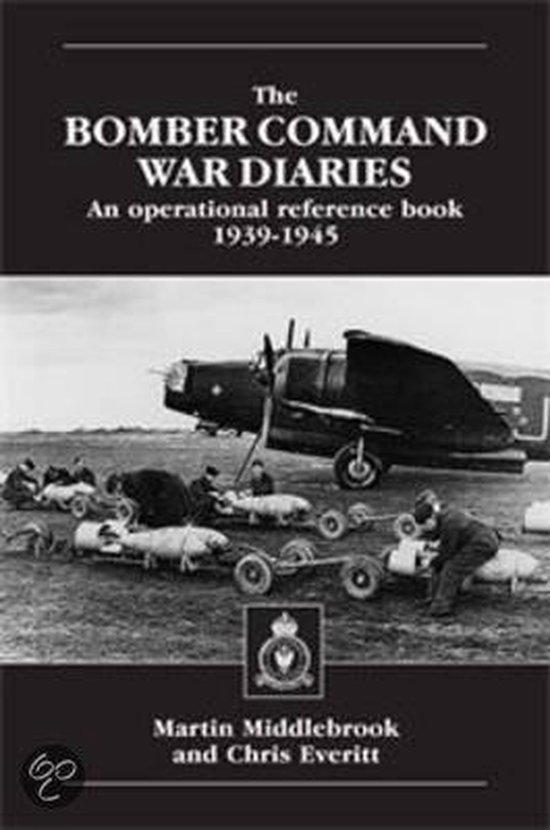Crash of Wellington Z1466 near Echt
Introduction
The average age of the 125.000 volunteers who flew the aircraft of Bomber Command during the Second World War was only 22 years. 55.573 of them failed to return, an attrition rate unequalled by any other arm of the allied forces. Bomber crews had an average life expectancy which was shorter than that of soldiers on the Western Front in World War One. There was hardly time for new pilots to gain some experience before taking their crew into combat. The average age of the crew of Wellington Z1466 was even lower. Canadian Flight Sergeant Chipman Fraser was the eldest at only 22. His compatriot and pilot, Flight Sergeant Harold Heath, had only just turned 19 when the crew was posted to No.142 Squadron and Heath had to take them to the air.
Target Karlsruhe
RAF Bomber Command tried to inflict damage on the German war machine from the air . At first, by means of strategic bombardments on industrial and military targets. But when Air Marshall Sir Arthur Harris was appointed as the new commander in spring 1942, ‘area bombing’ became the new strategy. Harris’ tactics consisted of indiscriminate attacks on cities with industrial and military importance. During the summer of 1942 these tactics were still regarded as a temporary expedient until the Command could develop new techniques to return to the strategy of precision-bombing. Karlsruhe, a city close to the German-French border and on the eastern shore of the river Rhine, had been the target of four small-scale attacks from the air until the summer of 1942. But the bomber crews had reached the city on only two of these operations. The aiming points of these raids had been the harbours and railways. Harris chose the city as the target for the night of 2/3 September 1942 for the same reasons. This time, Karlsruhe was to be attacked by a much larger number of bombers. The force possessed 200 aircraft of five different types (Lancasters, Halifaxes, Wellingtons, Stirlings and Hampdens). No.142 Squadron, based at RAF Grimsby, delivered eight Wellingtons for the attack. One of these aircraft was Wellington Z1466 (QT-L). The crew of this machine was as follows:
Pilot: Flight Sergeant Harold Edgar Heath (19 years old, Canadian)
Observer: Sergeant Dennis Alford (20 years old, British)
Air Bomber: Sergeant Herbert Berkeley Hill (19 years old, British)
Wireless Operator/Air Gunner: Flight Sergeant Chipman Cameron Dawson Fraser (22 years old, Canadian)
Air Gunner: Sergeant Charles Eric Hagan (21 years old, British)
With an average age of just over twenty, this was a very young crew. Their pilot, Flight Sergeant Heath, had only turned 19 a few months earlier. But the casualty rates forced Bomber Command to rush young crews like this one into operational service, instead of letting young pilots gain experience as 2nd pilot in more experienced crews.
The five young airmen had teamed-up at No.26 Operational Training Unit, where they received the last part of their training between June and August 1942. Dusseldorf had been the target of their first bombing mission during the night of 31 July/1 August. The training units provided aircraft for this raid in an attempt to reach the 1000-aircraft figure again (the bombardment of Cologne had been the first ‘thousand bomber raid’). With an operational flight under their belts, the crew was posted to No.142 Squadron on 15 August. The bombardment of Kassel during the night of 27/28 August was the first mission they took part in at 142 Squadron, but they had to return early due to excessive starboard oil temperature. The young crew was sent to Saarbrucken the next night. This was a successful trip on which they encountered no serious opposition. Wellington Z1466 was part of the bomber force again during the night of 1/2 September when they again successfully bombed Saarbrucken.
Fatal flight
The mission to Karlsruhe was their 5th operational flight together as a crew. After being briefed about their target, Wellington Z1466 took off from RAF Grimsby at 22:44 on the night of 2 September 1942. Eight aircraft of 142 Squadron, all carrying a bomb load of one 1000 lb and three 500 lb bombs, set course to Karlsruhe. Wellingtons Z1315 and Z1340 encountered technical problems and had to return to base. The force of bombers was attacked by German night-fighters over Holland. One of the fighters, a Messerschmitt Bf110, was flown by Feldwebel Heinz Oloff and his radio operator Obergefreiter Josef Schaffer of 3./Nachtjagdgeschwader 1. They had taken off from air base Venlo to prey on the allied bombers who were heading for Karlsruhe. At 01:47 Oloff attacked Wellington Z1466 and moments later the bomber exploded in mid-air. The explosion must have been caused by the bomb load of the Wellington. The burning remnants of the plane came down in a field nearby the Lilbosch monastery in the village of Echt, close to both the German and Belgian border, in the province of Limburg in the Netherlands. It was Oloff’s second combat victory.
The next day, the monks of the monastery and inhabitants of the village collected the pieces of wreckage. Amongst the debris were various heavily mutilated body parts of the crew members. The bodies were recovered and taken to Venlo where they were initially buried on the temporary military cemetery. After the war the crew was re-buried and now rests at the Jonkerbos War Cemetery in Nijmegen.
The crash site is marked by a small memorial. It consist of a wooden pole with a steel plaque and the letter ‘V’ on top. The plaque mentions the date of the crash and the names of the five airmen who were killed in the crash. The ‘V’ symbols victory and vrijheid (Dutch for freedom). The ‘V’ symbol is part of a main monument nearby Lilbosch Abbey as well, which also possesses a propeller from a Hercules aircraft. It commemorates the allied airmen who crashed in the community of Echt-Susteren during the Second World War.
Extra information
If the reader of this article has further information on this bomber or its crew, then you are kindly requested to get in touch with the author by using the feedback form.
Definitielijst
- area bombing
- Aerial bombardment targeted indiscriminately at a large area. Prohibited since 1977 by the Geneva Convention. Also known as carpet bombing, obliteration bombing and moral bombing.
- Bomber Command
- RAF unit which controlled strategic and sometimes tactical bombing (as in Normandy)
- mid
- Military intelligence service.
- RAF
- Royal Air Force. British air force
- raid
- Fast military raid in enemy territory
- strategy
- Art of warfare, the way in which war should be conducted in general.
Images
Wellingtons of No.142 Squadron involved in the operation
An overview of the other Wellingtons of No.142 Squadron which were detailed for the operation to Karlsruhe on the night of 2/3 September 1942.
Wellington Z1420 (QT-F)
Pilot: Warrant Officer Alan Charles Bray (28 years old, New Zealand)
Observer: Sergeant John May (age unknown, British)
Air Bomber: Sergeant Edward William Banks (age unknown, British)
Wireless Operator/Air Gunner: Sergeant R. R. Delaroche (age unknown, Canadian)
Air Gunner: Sergeant Jack Celtic Southey (29 years old, Southern Rhodesian)
Wellington Z1416 (QT-W)
Pilot: Sergeant Leonard Hewitt (age unknown, British)
Observer: Sergeant William James Olde (25 years old, British)
Air Bomber: Sergeant Arthur Elliott (age unknown, British)
Wireless Operator/Air Gunner: Sergeant Ernest Joseph Pettitt (20 years old, British)
Air Gunner: Sergeant Ernest Alfred Giles (23 years old, British)
Wellington Z1221 (QT-Y)
Pilot: Sergeant J. P. Kavanagh (age unknown, Canadian)
Observer: Sergeant F. S. Conway (age unknown, British)
Air Bomber: Sergeant D. Anderson (age unknown, British)
Wireless Operator/Air Gunner: Sergeant Frederick Albert Larsen (27 years old, Canadian)
Air Gunner: Sergeant William James North (age unknown, Canadian)
Wellington Z1477 (QT-Z)
Pilot: Pilot Officer Gavin Strang Smith (21 years old, British)
Observer: Sergeant William Jolliffe Whitewood (34 years old, British)
Air Bomber: Sergeant J. Edwards (age unknown, British)
Wireless Operator/Air Gunner: Sergeant Edward William Salmon (21 years old, Australian)
Air Gunner: Sergeant Louis Peter Marneweck (age unknown, British)
Wellington Z1315 (QT-C)
Pilot: Sergeant Ian Craigie Lamont (20 years old, Canadian)
Observer: Sergeant Henry John Balkwill (27 years old, British)
Air Bomber: Sergeant Frederick Walter Baker (29 years old, British)
Wireless Operator/Air Gunner: Sergeant Alexander Roy (22 years old, Canadian)
Air Gunner: Sergeant Reginald Harley Culp (23 years old, Canadian)
Wellington Z1318 (QT-K)
Pilot: Sergeant Tomas Augusta Julian (age unknown, Canadian)
Observer: Pilot Officer Arthur George Edwards (age unknown, British)
Air Bomber: Pilot Officer Robert Edwards Harvey (29 years old, British)
Wireless Operator/Air Gunner: Sergeant A. L. Weller (age unknown, Canadian)
Air Gunner: Sergeant F. Salvage (age unknown, British)
Wellington Z1340 (QT-A)
Pilot: Pilot Officer John Gifford Stower (26 years old, British)
Observer: Sergeant Hilton Edwin Peake (33 years old, British)
Air Bomber: Sergeant Horace Edward John Wilkinson (25 years old, Canadian)
Wireless Operator/Air Gunner: Sergeant J. B. Glover (age unknown, British)
Air Gunner: Sergeant William Petrie Smart Rae (age unknown, British)
Extra information
If the reader of this article has further information on these bombers or its crews, then you are kindly requested to get in touch with the author by using the feedback form.
Information
- Article by:
- Pieter Schlebaum
- Published on:
- 01-06-2015
- Last edit on:
- 15-04-2024
- Feedback?
- Send it!
Related books
Sources
- CHORLEY, W.R., RAF Bomber Command Losses of the Second World War, 1942, Ian Allan Publishing, 1998.
- MIDDLEBROOK, M. & EVERITT, C., The Bomber Command War Diaries, Midland Publishing, 2011.
Marleen Jennissen (researcher from Echt-Susteren)
Canadian Virtual War Memorial
No.142 Squadron Operations Record Book
